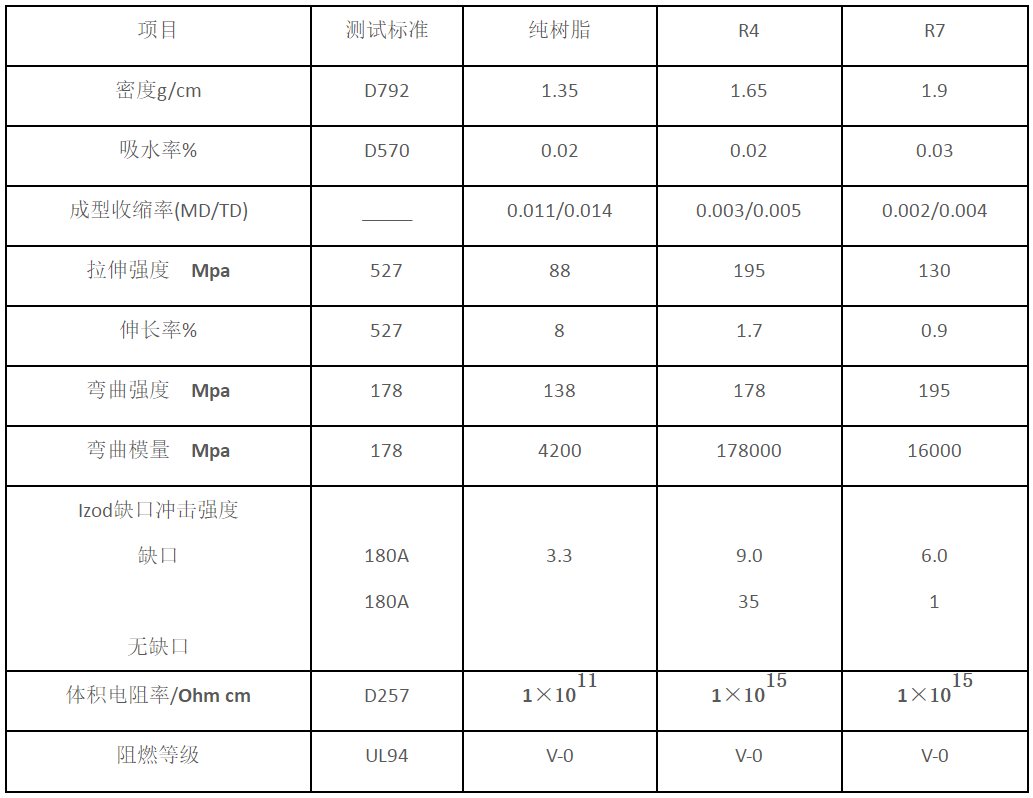/ CONTACT US
联系我们
COPYRIGHT© 德阳科吉高新材料有限责任公司 All rights reserved. 网站备案: 蜀ICP备12007805号
您的意见或建议是我们前进的动力,欢迎留言!
Technology and Applications
Introduction to polyphenylene sulfide
Polyphenylene sulfide is a new type of high performance thermoplastic resin, is a special engineering plastic, has excellent heat resistance, flame retardant, insulation, its strength and hardness are high, can be used in a variety of molding methods for processing, but also precision molding. It is widely used in automobile, electronic and electrical appliances, machinery industry, petrochemical industry, pharmaceutical industry, communication, light industry and military industry, aerospace and other special fields.
Polyphenylene sulfide (PPS) was successfully developed by the United States Phillips petroleum company (Phillips petroleum company) in 1971, the synthesis of the material, and applied for patent protection, the company in 1971 for the first time to realize the industrial production of polyphenylene sulfide and under the trade name "RytonPPS" market, By 1987, Phillip petroleum company's polyphenylene sulfide (PPS) had a global monopoly and export restrictions on its sale as a strategic substance.
Limited by technology, the world can industrial production of polyphenylene sulfide countries only the United States, Japan, China.
There are more than a dozen synthetic routes of polyphenylene sulfide, and only the following two can be large-scale industrial production at present:
1. Phillps route (Na2S, NaHS method) : Both American and Japanese companies adopt this method. At present, the price of LiCl has risen to 500,000 yuan. It is estimated that the price will continue to rise in the next 3-5 years. The better method is to use the patent of our invention "a polyphenylene sulfide resin synthesis process without adding any synthetic additives (ZL201410087185.4) is a better choice.
2, add Licl synthesis method: most of the domestic enterprises have adopted this method, and no one has reached the designed production capacity. The process is not mature, the engineering design is not perfect. The existing problems of this process (1. Reaction control; 2, solvent recovery; 3, salt treatment). Reaction Licl usage is 50~200 kg, Licl price per ton at present nearly 500 thousand yuan, making the synthetic cost than the foreign price per ton higher than 2- 100 thousand yuan, no competitive advantage.
3, melt condensation route:This method is similar to Macallum route in that the by-products produced during the reaction process are easy to remove, and the resulting product has high purity, linear structure, high degree of polymerization, and does not require expensive organic solvents, and can realize continuous reaction. But the molecular weight of the product is low and the strength is poor. And the product contains polysulfide structure, raw material refining is difficult. SK of Korea is using the technology in a joint venture with the Japanese Empire.
Disadvantages: no competitiveness, more than seven years of construction, there is no batch of qualified products, the scale of 12000T/a, has invested more than 2 billion yuan.
4, sodium acetate method: the product color is dark, waste salt treatment process is not mature. China: Jiuyuan new material from Guang 'an, Sichuan was synthesized by this method. Disadvantages: No competition, has been discontinued.
Domestic PPS synthesis enterprise existing problems and solutions
①. High cost: Because the synthesis process mostly adopts the Licl process route, compared with foreign countries, the cost is high, the quality stability is poor, the competitive force is not strong.
②. Low solvent recovery, domestic Licl recovery of 56-92%, long process route, high production cost.
③. By-product treatment: immature process, mainly salt (Nacl, solvent)
(4) Product positioning error:
PPS resins are divided into five categories according to their uses:
a, coating: dosage 500~1000T/a 1.5%
b, composite material modification: 18000T/a 85%
C, fiber grade: dosage 13000~18000T/a 10%
d, extrusion stage: dosage 1000~2000T/a 2%
e, film grade: dosage 1000T/a 1.5%
Domestic PPS synthesis enterprises focus on the market of fiber grade resin products, which is due to the demand of the domestic environmental protection market. China has become the largest country in the fiber market in the world with annual consumption of about 15,000 tons, accounting for 70% of the global market. Due to oversupply, resulting in the formation of synthetic fiber grade PPS material vicious competition, PPS fiber resin synthetic cost is higher than the synthetic injection grade, but the domestic price of fiber grade than injection molding is low, so resulting in PPS synthesis enterprises in addition to Zhejiang Xinhecheng all losses.
How to achieve PPS industry profit:
The domestic synthetic PPS synthetic enterprises put the market emphasis on PPS fiber market positioning error. PPS share in this field accounts for about 10% of PPS consumption, and the largest PPS market is composite material modification, accounting for 85% PPS consumption, is also the main profit growth point of the industry. Foreign synthetic PPS factories have built composite material modification enterprises, the purpose is: first, monopoly, PPS raw materials are not sold, are sold through modification. The second is to maximize product profits. PPS material modification has more than one hundred specifications, but the most commonly used grade is R4, that is, 40% glass fiber and 60% pure resin PPS. PPS raw materials through the twin screw extrusion add glass fiber granulation, (the current glass fiber market price of about 7000 tons, a ton of PPS resin, can produce two tons of PPS composite material. The performance of the material does not say, the cost is reduced by nearly half, the price is higher than the domestic PPS pure resin price. Similarly, another R7 (high filling PPS composite material), composition: PPS resin 30-35%, glass fiber: 40%, filling: ca2co3,ca2so4 25-30% (these materials cost several hundred to two thousand yuan per ton), that is, one ton of PPS can produce 3 tons of high-filled PPS composite materials, which is the main reason for foreign companies to make money in PPS industry (with R4, R7 pure resin index).

Solution:
Foreign PPS raw materials are not sold. Synthetic PPS manufacturers have built their own material modification factories in order to earn more profits. Almost no modified composite material factories have been built by domestic enterprises. The purpose of building modification plants: not only to make money, the key is to contact with users and take the lead in developing new products. Since most customers are in the automotive field, customers are generally not easy to change suppliers. Advantages: simple process, low cost, stable product quality. Building a modification plant costs less than 20 times as much as synthesis, but it makes more money than synthesis. Synthesis is the foundation, and the modification of composite materials is the key to make money in this industry. At present, domestic modification technology is far behind foreign countries.
2, the development or introduction of licl2 synthesis process, Deyang Keji high-tech Materials Co., Ltd. specializes in special engineering plastics for more than 20 years, in the domestic first to develop PPS fiber spinning, PPS film, PPS without any additive synthesis technology. Our PPS synthesis process can make the cost of about 40,000 per ton, short process route, solvent recovery of more than 96%, byproducts can be treated. More than 50 inventions have been applied for and more than 30 have been licensed. More than 50 inventions have been applied for and more than 30 have been licensed.
Authorized patents have been obtained:
1. A high strength polyphenylene sulfide pipe manufacturing method
(ZL200910059305.9)
2. The invention relates to a manufacturing method of polyphenylene sulfide melt-blown fiber products
(ZL200910216378.4)
3, the manufacturing method of copolymerized polyphenylene sulfide composite fiber
(ZL200710050866.3)
4. The invention discloses a method for manufacturing polyphenylene sulfide composite film
(ZL201010258687.0)
5. A method for manufacturing polyether ether ketone film
(ZL201010258689.X)
6. Spinneret for melt spinning
(ZL200710050650.7)
7. A synthesis method of low chlorine polyphenylene sulfide resin
(ZL200910167830.2)
8, polyphenylene sulfide fiber dyeing process
(ZL201010144947.1)
9. The invention relates to the manufacturing process of fiber grade polyphenylene sulfide resin slice
(ZL201210118516.7)
10. A method for manufacturing polyphenylene sulfide blow molding alloy (transferred)
(ZL201110227137.7)
11. The invention relates to a manufacturing method of high temperature and corrosion resistant polyphenylene sulfide composite pipe
(ZL201010258694.0)
12. The invention relates to a manufacturing method of polyphenylene sulfide modified composite granule
(ZL201210118457.3)
13. A manufacturing process of polyphenylene sulfide long fiber
(ZL201310029691.3)
14. A composite dental implant manufacturing process
(ZL201310426394.2)
15. The invention relates to a manufacturing method of polyphenylene sulfide composite flexible pipe with high pressure resistance
(ZL201310363862.6)
16. An industrial synthesis process of polyphenylene sulfide resin without adding any synthetic additives (ZL201410087185.4)
17. A composite dental implant component
(ZL201010568954.4)
18. An industrial synthesis process of polyphenylene sulfide resin without any additives
ZL201410087155.3
19. An organic reinforced fiber laminate material has a manufacturing process
ZL201711339850.4
20. Manufacturing process of polyglycolic acid resin composite film
ZL201711337991.2
21. A method for manufacturing polyglycolic acid fiber
ZL201711337979.1
22, a polyester liquid crystal fiber spinning process
ZL201711337994.6
23. A method for manufacturing inorganic reinforced fiber laminate material
ZL201711339849.1
24. The invention relates to the manufacturing process of high rail track plate containing inorganic reinforced fiber
ZL201811219248.1
25. The invention relates to the manufacturing process of a high speed rail track plate containing reinforced fiber cloth
ZL201811219249.6
26. The invention relates to a manufacturing process of high rail track plate containing organic reinforced fiber
ZL201811219250.9
27. A high speed rail track plate manufacturing process
ZL201811219246.2
28. A manufacturing process for high-speed rail Bridges containing reinforced fibers
ZL201811219091.2
29. A polyphenylene sulfide resin production process
ZL201811428985.2
30. A liquid crystal polyester film industrial production process
ZL201910447538.X
31. The utility model relates to non-metallic reinforcing bars for track plates and a preparation method thereof
ZL201810718894.6
32. A polyphenylene sulfide resin production process
ZL201811428985.2
33. A liquid crystal film industrial production process
ZL201910447538.X
34. The utility model relates to non-metallic reinforcing bars for track plates and a preparation method thereof
ZL201810718894.6
35. The invention relates to a manufacturing process of high rail track plate containing reinforced fiber
ZL201811219269.3
36. The invention relates to a manufacturing process of high rail track plate containing inorganic reinforced fiber
ZL201811219077.2
37, a polyphenylene sulfide resin synthesis process
ZL201811427061.0
The company can provide the following services:
① Transfer of catalyst-free synthesis technology of PPS can be a turnkey project.
② Help to construct PPS modified composite technology, turnkey project.
③ The existing synthesis and LiCl synthesis process engineering is reformed, LiCl synthesis process can not be used, the cost is greatly reduced.
④ PPS Film project cooperation: our company is the second enterprise to master this technology in addition to Toray Company of Japan.




